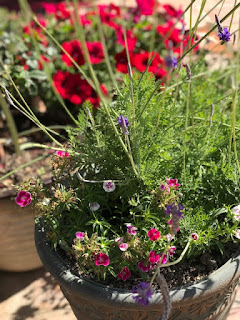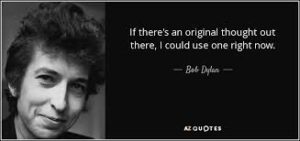
During an interview with the Stanford Graduate School of Business, Oprah said that “Everybody has a purpose, so your whole thing is to figure out what that is, your real job is to figure out why you’re really here, and then get about the business of doing it.” I wholeheartedly agree with Oprah. Here is my purpose:
“Because I value professional development and personal growth I will use my expertise to empower, motivate, and inspire faculty, staff, and students.”
I believe in my purpose. I think that it’s critical that we help faculty, staff, and students become the best versions of themselves so that they can succeed in their lives and touch the lives of others. Purpose is a motivator, and it pushes me to strive for excellence daily. I’m actively working towards fulfilling my purpose. I have a long list of how I’d like to fulfill my purpose in my office. I’ve provided an abridged version of my list below.
Here are my questions to you: What’s your purpose? What’s your purpose statement? Are you taking the time to figure it out? Have you already figured it out? How will you fulfill your purpose? Did you give up on it? Why did you give up? Was it fear/doubt? Have you taken the time to work through it?
Why is this important? Purpose provides direction and focus in a noisy distracted world. Purpose is important when you are facing adversity and uncertainty. It’s that shining light in the darkness that can help you to find your way out. Purpose builds strength, and it’s needed when it feels like your world is collapsing and caving in on you.
If you don’t know your purpose, you’ll find it. If you’ve found it, you’re hopefully working towards it. I encourage you to find it, to not to give up on it, and to fulfill it.
How I am actively fulfilling my purpose based off of my purpose statement (abridged list):
- Help faculty and staff become master teachers and become a master teacher myself. How?
- Co-faculty Developer: I am currently the co-faculty developer for the Center for Teaching Learning and Engagement. I am also an active participant in the Faculty Development Council.
- Faculty Professional Growth: I am committed to investing 36 hours per academic year to my professional growth, not because I have to, but because I want to. I’ve already accomplished that goal for the academic year.
- The 10,000-hour rule: The rule focuses on how an individual could become a master at something with 10,000 hours of deliberate practice. I am practicing teaching. I have acquired 4,130 hours thus far. (The concept can be found in Malcolm Gladwell’s book, Outliers)
- Become a Motivational/Inspirational Speaker for Faculty, Staff, and Students. How?
- Blogging: I use this to serve others. I hope they benefit from it. Especially during the rough times. My goal is to post once per week.
- Public Presentations: Participate in at least two community engagements per year.







